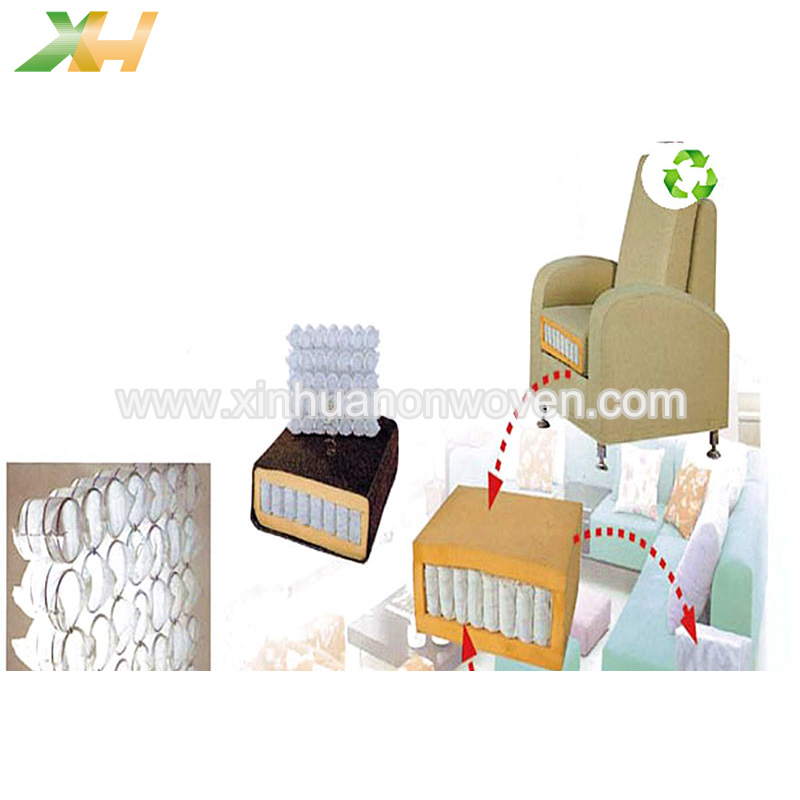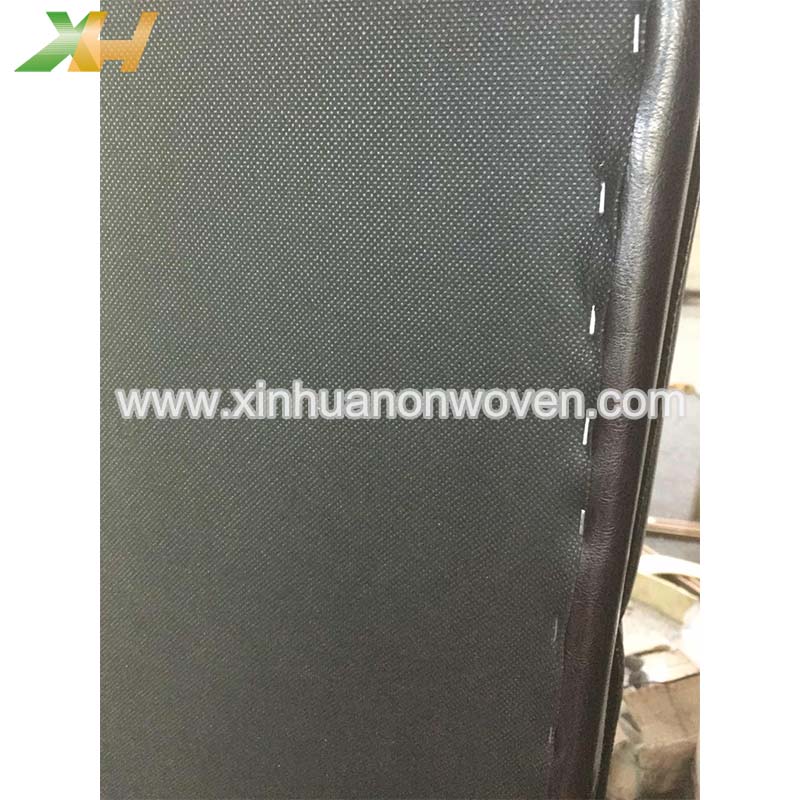Send Email info@xinhuatextile.com
Need Any Help?+86 -13805995216
Send Email info@xinhuatextile.com
Need Any Help?+86 -13805995216
As a new, environmentally friendly material, non-woven fabric is gaining increasing attention in the home decor and furniture design industries. Today, we'll explore in detail the technical advantages, application scenarios, pros and cons, and selection recommendations for non-woven fabric used in sofa bottoms.
I. Basic Analysis of Non-Woven Fabrics
Non-woven fabrics, also known as non-woven fabrics, are materials made by directly combining fibers through physical or chemical methods. Compared to the spinning and weaving steps in traditional textile production, the production process is simpler and more efficient. This unique production process makes non-woven fabrics lightweight, breathable, and easy to process, making them widely used in various fields such as medicine, health care, agriculture, and industry.

II. The Role of Non-Woven Fabric in Sofa Bottom

1. Dust and Dirt Repellency: Non-woven fabrics effectively block contaminants such as dust, pet hair, and insects from entering the sofa interior, reducing cleaning frequency. They also prevent the bottom springs or filling from being exposed, maintaining a clean appearance.
2. Breathable Protection: Non-woven fabrics offer excellent breathability. The closed structure of the sofa bottom prevents moisture accumulation, reducing the risk of mold and extending the sofa's lifespan.
3. Lightweight and Low-Carbon: Compared to traditional fabrics or plastic films, non-woven fabrics are lighter, more economical, and more suitable for mass production, helping to reduce production costs for furniture manufacturers.
4. Aesthetic and Concealed: Non-woven fabrics can be die-cut or sewn to fit the sofa bottom, creating a smooth appearance without affecting the overall design, achieving a perfect combination of aesthetics and practicality.
III. Applications of Non-woven Fabrics in Sofa Bottom

1. Bottom Sealing (Dust Cover): Non-woven fabric is cut and fixed to the sofa bottom to prevent dust.
2. Wrapping Filling or Springs: Within the sofa's internal structure, non-woven fabrics are used to wrap materials such as sponges and springs to prevent the filling from moving.
3. Composite Reinforcement: Composited with other materials (such as plastic film or fiberboard), non-woven fabrics enhance the wear resistance or support of the sofa bottom.

IV. Advantages and Limitations of Non-woven Fabrics
Advantages:
1. Lightweight and Easy to Process: Easy to cut and sew, suitable for custom sofa designs.
2. Breathable and Moisture-Resistant: Prevents humid and hot environments from causing rotting of wooden frames or rusting of metal components.
3. Economical and Practical: Low cost, suitable for large-scale production.
Limitations:
1. Limited Strength: May break under prolonged external forces (such as handling or pet scratching).
2. Poor Weather Resistance: Ordinary non-woven fabrics are susceptible to moisture and mold in humid environments, so choose waterproof/mildew-resistant non-woven fabrics.
3. Insufficient Durability: May age and become brittle after long-term use, requiring regular inspection and replacement.
V. Recommendations for Non-woven Fabric Selection
1. Material Selection:
- PP (Polypropylene) Non-woven Fabric: Economical and versatile, but pay attention to thickness (80-120 g/m² recommended). - Composite Non-woven Fabrics: For example, coating with PE film can enhance waterproof properties, or adding a flame-retardant coating can improve safety. - Biodegradable Materials: PLA nonwovens are an environmentally friendly option, but their strength must be verified.
2. Process Requirements:
- Prefer nonwovens that have been heat-pressed or needle-punched to improve abrasion and tear resistance.
- For waterproofing, spunlace nonwovens with a moisture-proof coating can be used.
VI. Summary and Outlook
Nonwovens are an economical and practical choice for sofa backings, particularly suitable for dustproofing, lightweighting, and cost-effectiveness. However, when choosing nonwovens, comprehensive considerations should be taken, such as choosing waterproof or thickened materials, and regular maintenance to extend their lifespan. For more durable or environmentally friendly products, composite materials or upgrading to natural fiber products can also be considered to meet the needs of different consumers.
Please Read On, Stay Posted, Subscribe, And We Welcome You To Tell Us What You Think.
Copyright @ 2025 Xinhua Textile Co., Limited All Rights Reserved. Network Supported
Network Supported
Hi! Click one of our members below to chat on